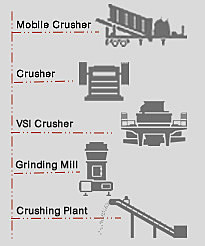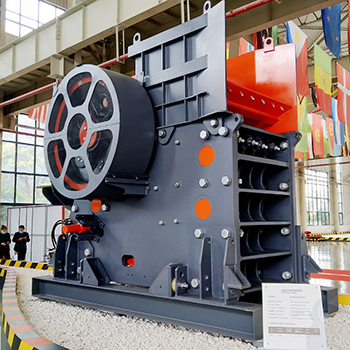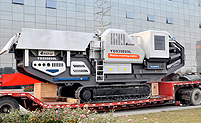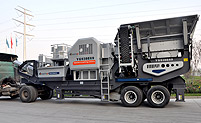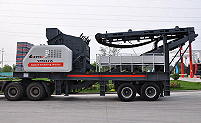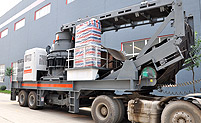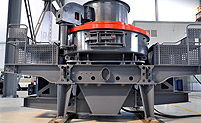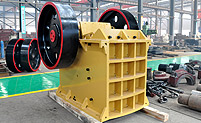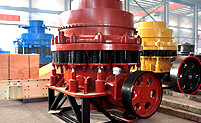Asbestos crusher
Asbestos is a set of six naturally occurring silicate minerals exploited commercially for their desirable physical properties. They all have in common their asbestiform habit, long, (1:20) thin fibrous crystals. The inhalation of asbestos fibers can cause serious illnesses, including malignant lung cancer, mesothelioma (a formerly rare cancer strongly associated with exposure to amphibole asbestos), and asbestosis (a type of pneumoconiosis). Long term exposure to high concentrations of asbestos fibers is more likely to cause health problems, as asbestos exists in the ambient air at low levels, which itself does not cause health problems. The European Union has banned all use of asbestos and extraction, manufacture and processing of asbestos products.
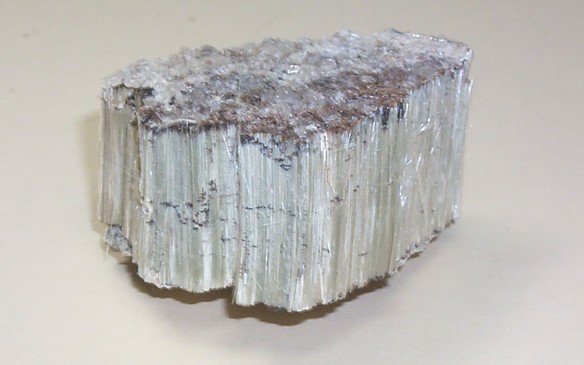
Asbestos became increasingly popular among manufacturers and builders in the late 19th century because of its sound absorption, average tensile strength, and its resistance to heat, electrical and chemical damage. When asbestos is used for its resistance to fire or heat, the fibers are often mixed with cement or woven into fabric or mats. Asbestos was used in some products for its heat resistance, and in the past was used on electric oven and hotplate wiring for its electrical insulation at elevated temperature, and in buildings for its flame-retardant and insulating properties, tensile strength, flexibility, and resistance to chemicals.
Uses
Historic usage
Asbestos was named by the ancient Greeks, although the naming of minerals was not very consistent at that time (the modern Greek word ἀσβεστος stands for lime, not for the material known as asbestos in English). The ancients already recognized certain hazards of the material. The Greek geographer Strabo and the Roman naturalist Pliny the Elder noted that the material damaged lungs of the slaves who mined it.Charlemagne, the first Holy Roman Emperor, is said to have had a tablecloth made of asbestos.
Wealthy Persians, who bought asbestos imported over the Hindu Kush, amazed guests by cleaning the cloth by simply exposing it to fire. According to Biruni in his book of Gems, any cloths made of asbestos (Persian: آذرشست, āzarshast or Persian: آذرشب, āzarshab) were called (Persian: شستكه) shastakeh.Some of the Persians believed the fiber was fur from an animal (named samandar, Persian: سمندر) that lived in fire and died when exposed to water.
While traveling to China, Marco Polo described observing miraculous garments that were cleaned by being placed in fires. These garments were likely made from asbestos. Some archeologists believe that ancients made shrouds of asbestos, wherein they burned the bodies of their kings, in order to preserve only their ashes, and prevent their being mixed with those of wood or other combustible materials commonly used in funeral pyres. Others assert that the ancients used asbestos to make perpetual wicks for sepulchral or other lamps. In more recent centuries, asbestos was indeed used for this purpose. Although asbestos causes skin to itch upon contact, ancient literature indicates that it was prescribed for diseases of the skin, and particularly for the itch. It is possible that they used the term asbestos for soapstone, because the two terms have often been confused throughout history.
Recent usage
Asbestos became more widespread during the industrial revolution; in the 1866 it was used as insulation in the U.S. and Canada. Development of the first commercial asbestos mine began in 1874 in the Appalachian foothills of Quebec.By the mid 20th century uses included fire retardant coatings, concrete, bricks, pipes and fireplace cement, heat, fire, and acid resistant gaskets, pipe insulation, ceiling insulation, fireproof drywall, flooring, roofing, lawn furniture, and drywall joint compound.
Approximately 100,000 people in the United States have died, or will die, from asbestos exposure related to ship building. In the Hampton Roads area, a shipbuilding center, mesothelioma occurrence is seven times the national rate. Thousands of tons of asbestos were used in World War II ships to wrap the pipes, line the boilers, and cover engine and turbine parts. There were approximately 4.3 million shipyard workers in the United States during WWII; for every thousand workers about fourteen died of mesothelioma and an unknown number died from asbestosis.
Asbestos fibers were once used in automobile brake pads, shoes, and clutch discs. Since the mid-1990s, a majority of brake pads, new or replacement, have been manufactured instead with linings made of ceramic, carbon, metallic and aramid fiber (Twaron or Kevlar—the same material used in bulletproof vests).
Kent, the first filtered cigarette on the market, used crocidolite asbestos in its "Micronite" filter from 1952 to 1956.
The first documented death related to asbestos was in 1906. In the early 1900s researchers began to notice a large number of early deaths and lung problems in asbestos mining towns. The first diagnosis of asbestosis was made in the UK in 1924. By the 1930s, the UK regulated ventilation and made asbestosis an excusable work related disease, about ten years sooner than the U.S. The term mesothelioma was first used in medical literature in 1931; its association with asbestos was first noted sometime in the 1940s.
The United States government and asbestos industry have been criticized for not acting quickly enough to inform the public of dangers, and to reduce public exposure. In the late 1970s court documents proved that asbestos industry officials knew of asbestos dangers since the 1930s and had concealed them from the public. A similar situation had arisen in the 1920s with the careless handling of radium and the ensuing scandal of the Radium Girls.
In Japan, particularly after World War II, asbestos was used in the manufacture of ammonium sulfate for purposes of rice production, sprayed upon the ceilings, iron skeletons, and walls of railroad cars and buildings (during the 1960s), and used for energy efficiency reasons as well. Production of asbestos in Japan peaked in 1974 and went through ups and downs until about 1990, when production began to drop severely. In Australia, asbestos was widely used in construction and other industries between 1945 and 1980. From the 1970s there was increasing concern about the dangers of asbestos and its use was phased out. Mining ceased in 1983. The use of asbestos was phased out in 1989 and banned entirely in 2004. The dangers of asbestos are now well known in Australia and there is help and support for sufferers from asbestosis or mesothelioma.
PrevPage: [Metal Ore Crusher]
Next Page: Ballast crusher

